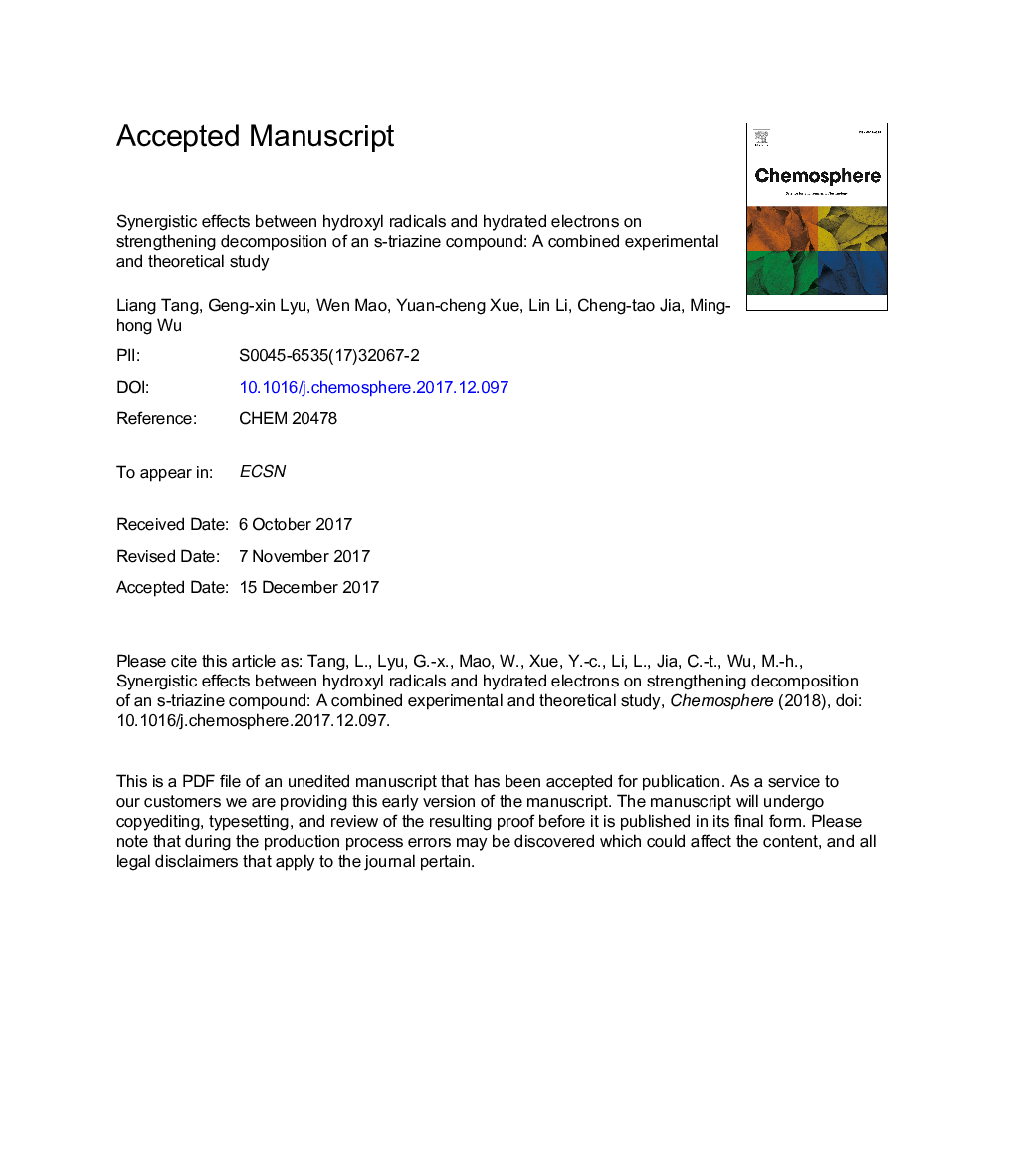| Article ID | Journal | Published Year | Pages | File Type |
|---|---|---|---|---|
| 8852321 | Chemosphere | 2018 | 25 Pages |
Abstract
The decomposition of an environmentally recalcitrant s-triazine compound, prometry (PMT), was carried out by experimental and theoretical approaches to study the combined effects of hydroxyl radicals (OH) and hydrated electrons (eaqâ). With the participation of strongly oxidative radicals OH and reductive radicals eaqâ induced by electron beam (EB), PMT obtained a good decomposition performance, which was obviously better than those methods simply using OH as the single active species. The evolution of cyanuric acid (CA) during the EB and UV irradiation processes elucidate that former method could efficiently decompose such chemically stable intermediate. The experiments of radical scavengers further suggest that OH was the predominant radical during PMT degradation, while eaqâ was beneficial to further decomposition and mineralization. Combined with the results of density functional theory (DFT) calculations, the strengthened synergistic effects between OH and eaqâ were proven. The calculations illustrated OH could attack the carbon-branch-chains of s-trazine ring and form OH-adducts rather than nitrogen oxides. Moreover, the presence of eaqâ could not only greatly change the geometry of the s-triazine ring, but also help cleaving alkyl chain on ring, thus facilitate the complete mineralization.
Keywords
Related Topics
Life Sciences
Environmental Science
Environmental Chemistry
Authors
Liang Tang, Geng-xin Lyu, Wen Mao, Yuan-cheng Xue, Lin Li, Cheng-tao Jia, Ming-hong Wu,
